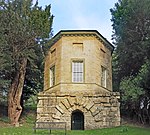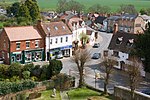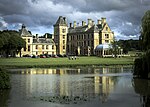Compton Verney
Verney familyVillages in Warwickshire

Compton Verney is a parish and historic manor in the county of Warwickshire, England. The population taken at the 2011 census was 119. The surviving manor house is the Georgian mansion Compton Verney House.
Excerpt from the Wikipedia article Compton Verney (License: CC BY-SA 3.0, Authors, Images).Compton Verney
The Old Walled Garden, Stratford-on-Avon
Geographical coordinates (GPS) Address Nearby Places Show on map
Geographical coordinates (GPS)
| Latitude | Longitude |
|---|---|
| N 52.17348 ° | E -1.54519 ° |
Address
Untitled Boulder
The Old Walled Garden
CV35 9HJ Stratford-on-Avon
England, United Kingdom
Open on Google Maps







